-
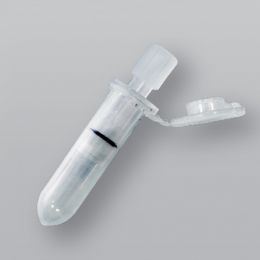 BioMasher I®, 1.5ml Microtube with O-ring, PE filter, soft samplesCatalog Number 25525
BioMasher I®, 1.5ml Microtube with O-ring, PE filter, soft samplesCatalog Number 25525Disposable Homogenizer for soft samples with small pore size.
Non-sterile, non-Autoclavable.
-
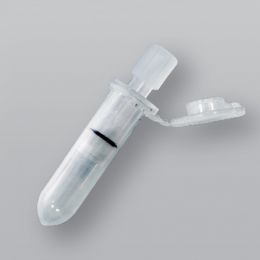 BioMasher I®, 2.0ml Microtube with O-ring, PE filter, soft samplesCatalog Number 25526
BioMasher I®, 2.0ml Microtube with O-ring, PE filter, soft samplesCatalog Number 25526Disposable Homogenizer for soft samples with small pore size.
Non-sterile, non-Autoclavable.
-
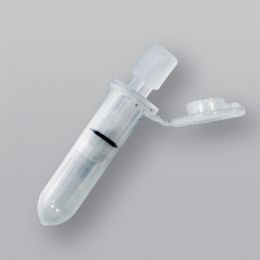 BioMasher I® with 1.5ml Microtube w/o O-ring, PE filter, hard samplesCatalog Number 25527
BioMasher I® with 1.5ml Microtube w/o O-ring, PE filter, hard samplesCatalog Number 25527Disposable Homogenizer for hard samples with small pore size.
Non-sterile, non-Autoclavable.
-
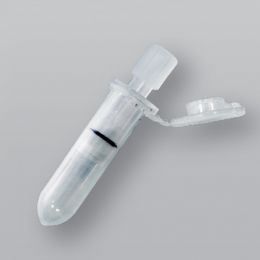 BioMasher I® with 1.5ml Microtube w/o O-ring, PP filter, hard samplesCatalog Number 25528
BioMasher I® with 1.5ml Microtube w/o O-ring, PP filter, hard samplesCatalog Number 25528Disposable Homogenizer for hard samples with small pore size.
Non-sterile, non-Autoclavable.
-
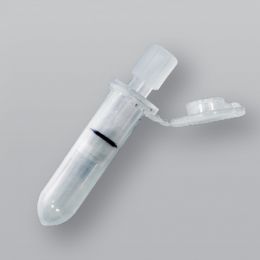 BioMasher I® with 1.5ml Microtube with O-ring, PP filter, soft samplesCatalog Number 25529
BioMasher I® with 1.5ml Microtube with O-ring, PP filter, soft samplesCatalog Number 25529Disposable Homogenizer for soft samples with small pore size.
Non-sterile, non-Autoclavable.
-
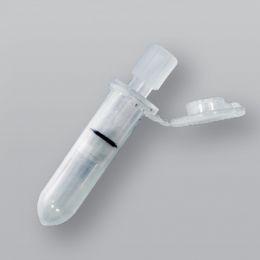 BioMasher I® with 2.0ml Microtube w/o O-ring, PE filter, hard samplesCatalog Number 25530
BioMasher I® with 2.0ml Microtube w/o O-ring, PE filter, hard samplesCatalog Number 25530Disposable Homogenizer for soft samples with small pore size.
Non-sterile, non-Autoclavable.
-
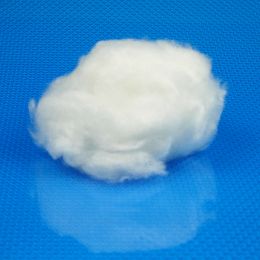 Nylon Wool FiberCatalog Number 18369
Nylon Wool FiberCatalog Number 18369Nylon wool fiber can be used to separate leukocytes from peripheral blood and to separate T-cells from B-cells. Granulocytes and B-cells stick to the fibers, while T-cells and other cells do not.
-
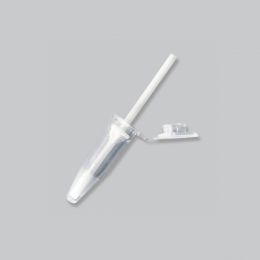 Biomasher II® Disposable Micro Tissue Homogenizer (Non-sterile)Catalog Number 25534
Biomasher II® Disposable Micro Tissue Homogenizer (Non-sterile)Catalog Number 25534Disposable closed system micro tissue homogenizer. The abrasive surfaces on the pestle tip and inner tube area ensure efficient grinding of samples. Ideal for homogenizing animal tissues and organs as well as plant materials, insects, DNA, RNA, proteins, yeasts and enzymes. Tube is clear polypropylene and the pestle is polyacetal. Non-sterile.
-
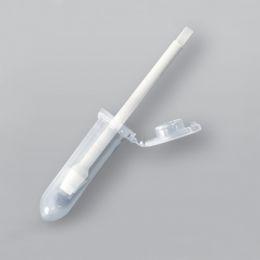 BioMasher III® Disposable Micro Tissue Homogenizer (Non-sterile)Catalog Number 25535
BioMasher III® Disposable Micro Tissue Homogenizer (Non-sterile)Catalog Number 25535Disposable closed system micro tissue homogenizer. The abrasive surfaces on the pestle tip and inner tube area ensure efficient grinding of samples. Ideal for homogenizing animal tissues and organs as well as plant materials, insects, DNA, RNA, proteins, yeasts and enzymes. Tube is clear polypropylene and the pestle is polyacetal. Non-sterile.
-
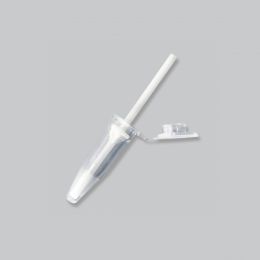 Biomasher II® Disposable Micro Tissue Homogenizer (EOG-sterilized)Catalog Number 25533
Biomasher II® Disposable Micro Tissue Homogenizer (EOG-sterilized)Catalog Number 25533Disposable closed system micro tissue homogenizer. The abrasive surfaces on the pestle tip and inner tube area ensure efficient grinding of samples. Ideal for homogenizing animal tissues and organs as well as plant materials, insects, DNA, RNA, proteins, yeasts and enzymes. Tube is clear polypropylene and the pestle is polyacetal. EOG-sterilized.
-
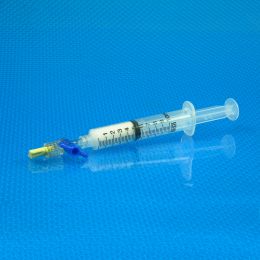 Nylon Wool Fiber, Syringe (Gamma Irradiated)Catalog Number 21759
Nylon Wool Fiber, Syringe (Gamma Irradiated)Catalog Number 21759Nylon wool fiber can be used to separate leukocytes from peripheral blood and to separate T-cells from B-cells. Granulocytes and B-cells stick to the fibers, while T-cells and other cells do not.
Ready to use, 500mg prepacked in 10cc syringes.
-
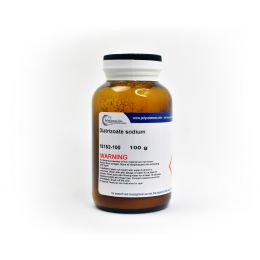 Diatrizoate sodiumCatalog Number 18152
Diatrizoate sodiumCatalog Number 18152Forms solutions of low viscosity and high density, and can be used along with an aggregating agent like Ficoll 400 for qualitative in vitro isolation of pure lymphocytes from whole blood by gradient centrifugation.
-
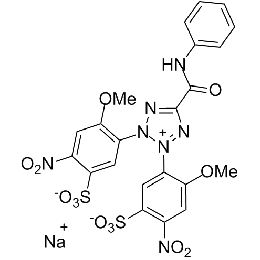 XTTCatalog Number 19661
XTTCatalog Number 19661Useful in in vitro cell growth assays with possible applicability to a variety of problems in cellular pharmacology and biology.
-
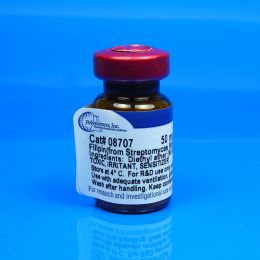 Filipin (from Streptomyces filipinensis)Catalog Number 08707
Filipin (from Streptomyces filipinensis)Catalog Number 08707Polyene antibiotic fluorochrome for cholesterol determination. Used as an antifungal agent.
-
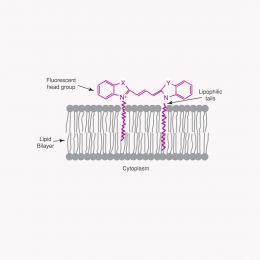 CellVue® Maroon Mini Kit For Membrane LabelingCatalog Number 24840
CellVue® Maroon Mini Kit For Membrane LabelingCatalog Number 24840The CellVue® Maroon cell linker Mini Kit uses proprietary membrane labeling technology to stably incorporate a fluorescent dye with long aliphatic tails (CellVue® Maroon) into lipid regions of the cell membrane (1).
-
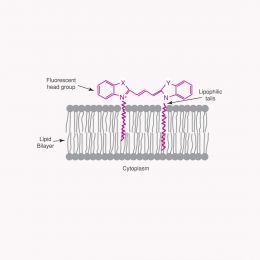 CellVue® Lavender Mini Kit For Membrane LabelingCatalog Number 24841
CellVue® Lavender Mini Kit For Membrane LabelingCatalog Number 24841The CellVue® Lavender cell linker Mini Kit uses proprietary membrane labeling technology to stably incorporate a fluorescent dye with long aliphatic tails (CellVue® Lavender) into lipid regions of the cell membrane (1).
-
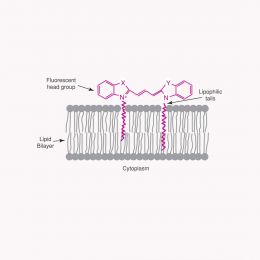 CellVue® Plum Mini Kit For Membrane LabelingCatalog Number 24842
CellVue® Plum Mini Kit For Membrane LabelingCatalog Number 24842The CellVue® Plum cell linker Mini Kit uses proprietary membrane labeling technology to stably incorporate a fluorescent dye with long aliphatic tails (CellVue® Plum) into lipid regions of the cell membrane (1).
-
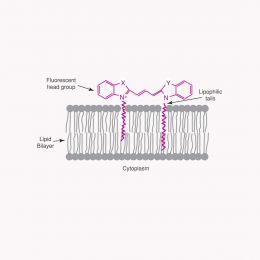 CellVue® Burgundy Mini Kit For Membrane LabelingCatalog Number 24843
CellVue® Burgundy Mini Kit For Membrane LabelingCatalog Number 24843The CellVue® Burgundy cell linker kit uses proprietary membrane labeling technology to stably incorporate a fluorescent dye with long aliphatic tails (CellVue® Burgundy) into lipid regions of the cell membrane (1).
-
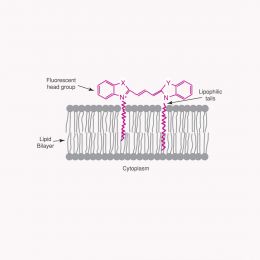 CellVue® Claret Mini Kit For Membrane LabelingCatalog Number 24844
CellVue® Claret Mini Kit For Membrane LabelingCatalog Number 24844The CellVue® Claret cell linker Mini Kit uses proprietary membrane labeling technology to stably incorporate a fluorescent dye with long aliphatic tails (CellVue® Claret) into lipid regions of the cell membrane (1).
-
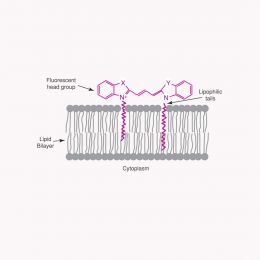 CellVue® NIR780 Mini Kit For Membrane LabelingCatalog Number 24845
CellVue® NIR780 Mini Kit For Membrane LabelingCatalog Number 24845The CellVue® NIR780 cell linker Mini Kit uses proprietary membrane labeling technology to stably incorporate a fluorescent dye with long aliphatic tails ( CellVue® NIR780) into lipid regions of the cell membrane (1).
-
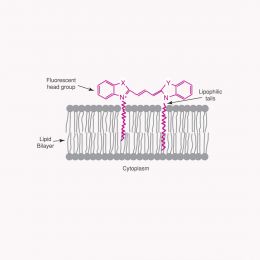 CellVue® NIR815 Mini Kit For Membrane LabelingCatalog Number 24846
CellVue® NIR815 Mini Kit For Membrane LabelingCatalog Number 24846The CellVue® NIR815 cell linker Mini Kit uses proprietary membrane labeling technology to stably incorporate a fluorescent dye with long aliphatic tails ( CellVue® NIR815) into lipid regions of the cell membrane (1).
-
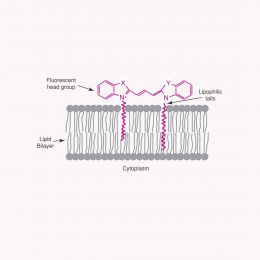 CellVue® Jade Mini Kit For Membrane LabelingCatalog Number 24904
CellVue® Jade Mini Kit For Membrane LabelingCatalog Number 24904The CellVue® Jade cell linker kit uses proprietary membrane labeling technology to stably incorporate a fluorescent dye with long aliphatic tails (CellVue® Jade) into lipid regions of the cell membrane (1).
-
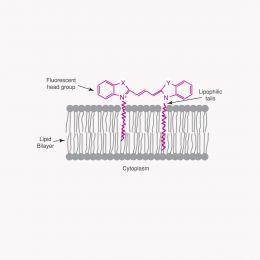 CellVue® Maroon Kit For Membrane Labeling - MIDI KitCatalog Number 24847
CellVue® Maroon Kit For Membrane Labeling - MIDI KitCatalog Number 24847The CellVue® Maroon cell linker Midi Kit uses proprietary membrane labeling technology to stably incorporate a fluorescent dye with long aliphatic tails (CellVue® Maroon) into lipid regions of the cell membrane (1).
-
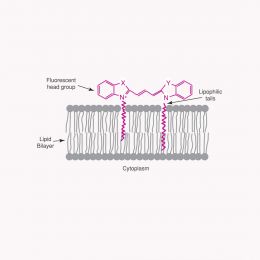 CellVue® Plum Kit For Membrane Labeling - MIDI KitCatalog Number 24848
CellVue® Plum Kit For Membrane Labeling - MIDI KitCatalog Number 24848The CellVue® Plum cell linker Midi Kit uses proprietary membrane labeling technology to stably incorporate a fluorescent dye with long aliphatic tails (CellVue® Plum) into lipid regions of the cell membrane (1).
-
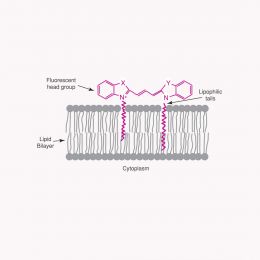 CellVue® Burgundy Kit For Membrane Labeling - MIDI KitCatalog Number 24850
CellVue® Burgundy Kit For Membrane Labeling - MIDI KitCatalog Number 24850 -
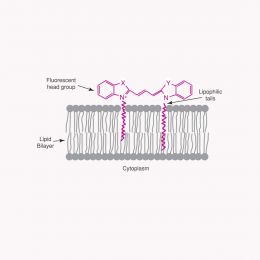 CellVue® Lavender Kit For Membrane Labeling - MIDI KitCatalog Number 24851
CellVue® Lavender Kit For Membrane Labeling - MIDI KitCatalog Number 24851The CellVue® Lavender cell linker Midi Kit uses proprietary membrane labeling technology to stably incorporate a fluorescent dye with long aliphatic tails (CellVue® Lavender) into lipid regions of the cell membrane (1).
-
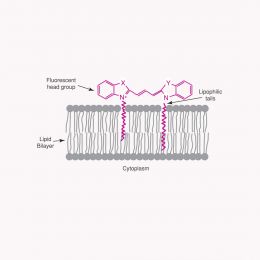 CellVue® NIR780 Kit For Membrane Labeling - MIDI KitCatalog Number 24852
CellVue® NIR780 Kit For Membrane Labeling - MIDI KitCatalog Number 24852The CellVue® NIR780 cell linker Midi Kit uses proprietary membrane labeling technology to stably incorporate a fluorescent dye with long aliphatic tails ( CellVue® NIR780) into lipid regions of the cell membrane (1).
-
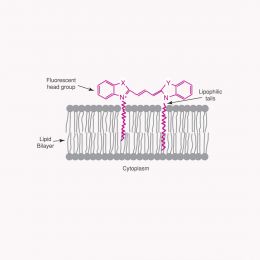 CellVue® NIR815 Kit For Membrane Labeling - MIDI KitCatalog Number 24853
CellVue® NIR815 Kit For Membrane Labeling - MIDI KitCatalog Number 24853The CellVue® NIR815 cell linker Midi Kit uses proprietary membrane labeling technology to stably incorporate a fluorescent dye with long aliphatic tails (CellVue® NIR815) into lipid regions of the cell membrane (1).
-
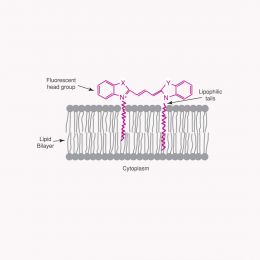 CellVue® Jade Kit For Membrane Labeling - MIDI KitCatalog Number 24905
CellVue® Jade Kit For Membrane Labeling - MIDI KitCatalog Number 24905The CellVue® Jade cell linker kit uses proprietary membrane labeling technology to stably incorporate a fluorescent dye with long aliphatic tails (CellVue® Jade) into lipid regions of the cell membrane (1).
-
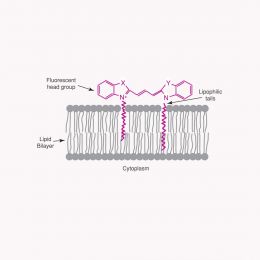 CellVue® Red Mini Kit For Membrane LabelingCatalog Number 25567
CellVue® Red Mini Kit For Membrane LabelingCatalog Number 25567The CellVue® Red cell linker kit uses proprietary membrane labeling technology to stably incorporate a fluorescent dye with long aliphatic tails (CellVue® Red) into lipid regions of the cell membrane (1). The pattern of staining is dependent upon the cell type being labeled and the membranes of the cells (2, 3). CellVue® Red, a far red/near infrared fluorescent cell linker has been reported to be useful for cell tracking in isolated organ preparations applications (4).
Label cell membranes with lipophilic dyes that emit in the long wavelength UV, the far red or the near infrared region of the spectrum.
-
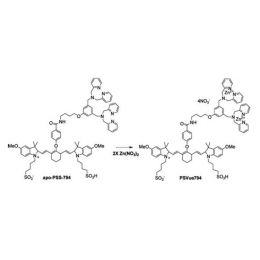 PSVue® 794 Reagent KitCatalog Number 25101
PSVue® 794 Reagent KitCatalog Number 25101A near-infrared fluorescent probe for detection of apoptotic cells, bacteria and other anionic membranes. The PSVue® 794 reagent kit contains components to provide a 1 mM solution of PSVue®794 in aqueous solution.
-
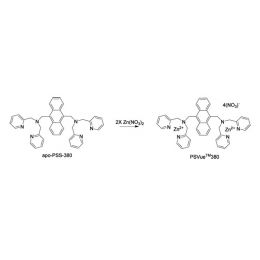 PSVue® 380 Reagent KitCatalog Number 25102
PSVue® 380 Reagent KitCatalog Number 25102A long wavelength ultraviolet fluorescent probe for detection of apoptotic cells, bacteria, and other anionic membranes. The PSVue® 380 (formerly PSS-380) reagent kit contains components to provide a 1 mM solution of PSVue® 380 in aqueous solution.
-
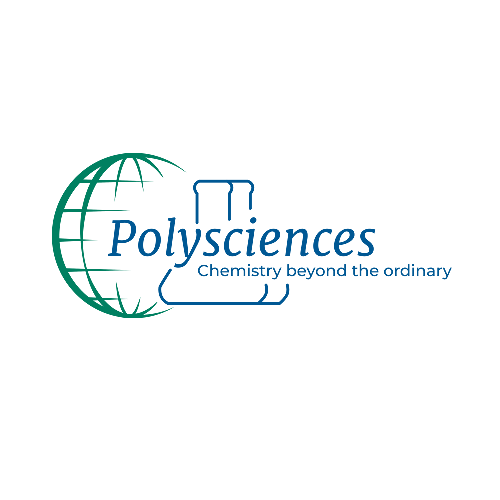 Duramycin-LC-BiotinCatalog Number 25690
Duramycin-LC-BiotinCatalog Number 25690Biotin is attached to amino groups of duramycin via a 6-carbon aminohexanoyl spacer. The conjugate contains 1 biotin molecule per duramycin molecule.
-
 PSVue® 643Catalog Number 25685
PSVue® 643Catalog Number 25685The PSVue643® kit contains 0.25mL of a 1mM solution of PSVue643® in water. The compound has an absorbance max at 643nm and a fluorescence emission max at 658nm.
-
 PSVue® 550Catalog Number 25684
PSVue® 550Catalog Number 25684The PSVue® 550 reagent kit contains components to provide ~0.5 mL of 1 mM solution of PSVue® 550. The compound has an absorbance max at 553nm and fluorescence emission max at 615nm.
-
 PSVue® BiotinCatalog Number 25683
PSVue® BiotinCatalog Number 25683Vial contains 1mg of solid. PSVue® Biotin can be complexed with streptavidin-coated quantum dots (not provided) for in vivo and in vitro use. Procedures to formulate and prepare are provided.
-
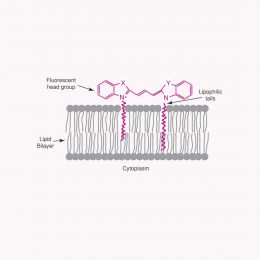 CellVue® Red Kit For Membrane Labeling - MIDI KitCatalog Number 25682
CellVue® Red Kit For Membrane Labeling - MIDI KitCatalog Number 25682The CellVue® Red Fluorescent Cell Linker Kit contains a 1 mM dye stock solution and cell labeling diluent.
Dye fluorescence properties: Ex max = 567 nm and Em max = 588 nm. Provides stable labeling of the lipid regions of cell membranes.
Cell Biology
